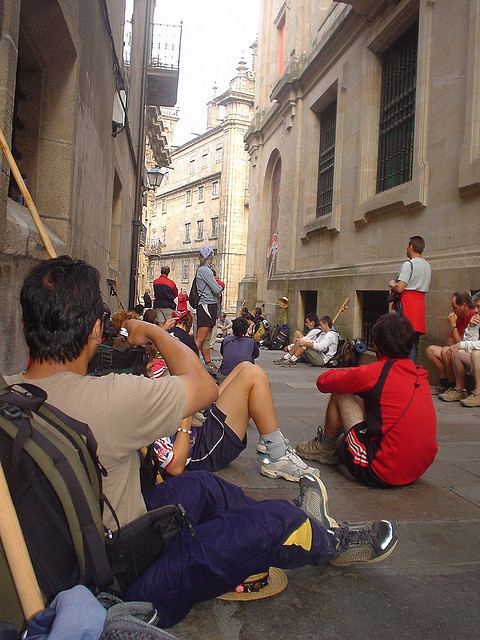Following an ancient trail: a guide to the Camino de Santiago
The Camino de Santiago – also known as the Way of St James – is a long-distance pilgrimage route across Europe that has been followed by the faithful for centuries. Their ultimate destination is the impressive Santiago de Compostela and any walking tour along the same trail will also lead you to this monument.
This is a wonderful opportunity to follow in the footsteps of travellers from years gone by, with the path first being used as far back as the 9th century by pilgrims keen to visit the place where the remains of St James are said to be interred.
A bit of history…
For the uninitiated, the Camino de Santiago runs from the French border across Spain to Santiago de Compostela near the country’s northern coast. There are several routes throughout the rest of Europe that link to the path that begins on the border, but we’re going to focus on the part that’s in Spain.
The pilgrimage was at its most popular during the Middle Ages, with fewer people choosing to make the journey as time went by due to events like the outbreak of the plague and the protestant reformation. In more recent times it has undergone something of a renaissance, with not just religious pilgrims but also keen hikers opting to tackle the challenge.
If you walk at least the final 100 km of the Camino, you’ll receive an official certificate to mark your achievement. It’s worth bearing this in mind when you’re looking at walking holidays on this route, as not all will give you this opportunity. For an example of an itinerary that does, click here.
You’ll be given a booklet known as a Credencial when you set out on your journey and you should collect stamps in this from various points along the way to prove that you’ve trekked the final 100 km to the city.
Hiking on the Camino de Santiago
The Camino de Santiago is a well-trodden path (as you’ve probably gathered), so the hiking underfoot is not difficult. It’s generally regarded as a moderate trek and you certainly cover a fair distance, but while there are ups and downs, you won’t encounter any overly steep inclines on the final stretch of the trail.
There are many landmarks and interesting towns and villages to visit along the way as well, so you’ll want to take your time on this trek and really soak up the camaraderie and atmosphere as you walk with other people on the same route.
If walking along the Camino de Santiago is something you’ve always wanted to do, it could be best to book a tailormade tour to ensure you get to visit all the sites along the way that interest you. Explore Worldwide offers this kind of trip on the Camino de Santiago starting from £840.
Sights on the Camino de Santiago
The first noteworthy landmark you’ll reach on your hike is the 100 km marker indicating to pilgrims that they’ve reached the final leg of their epic journey. Of course, this will come shortly after you’ve started walking, but is nonetheless an exciting sign to see.
Portomarin is one of the first villages you’ll reach on your hike and it has an interesting story, having been relocated from its original location on the orders of General Franco. It’s worth negotiating the narrow streets to find San Pedro church, which is a great example of Romanesque architecture.
Palas de Rei is another village you’ll pass through, but don’t hurry in this settlement – spend a bit of time admiring its central plaza and look out for the town hall, which is of typical Galician design.
As you get closer to Santiago de Compostela, you’ll reach the charming Santa Irene Chapel, which dates from the 18th century and is home to a number of statues of St James.
One of the final stops en route is in Lavacolla, traditionally where pilgrims would wash and change into their best clothes before completing their trek and arriving at the cathedral. From here you have to climb a hill to reach Monte Gozo, which boasts amazing views over to the city and will afford you your first glimpse of the cathedral’s famous spires.
Make sure you plan to have at least one day to fully explore Santiago de Compostela after you’ve finished your hike. In addition to the cathedral, there are many other historical landmarks in the city, such as the Palacio de Gelmirez and the Convento de Santo Domingo de Bonaval.





 Welcome to Home Town Travel Guides.com , your source for travel guides written by locals and those who've been there and done that! ~Jeremy
Welcome to Home Town Travel Guides.com , your source for travel guides written by locals and those who've been there and done that! ~Jeremy